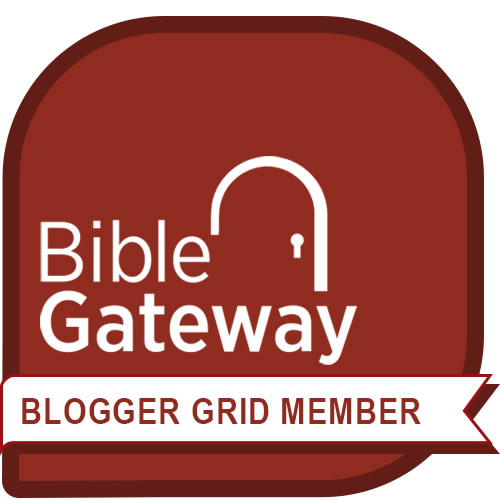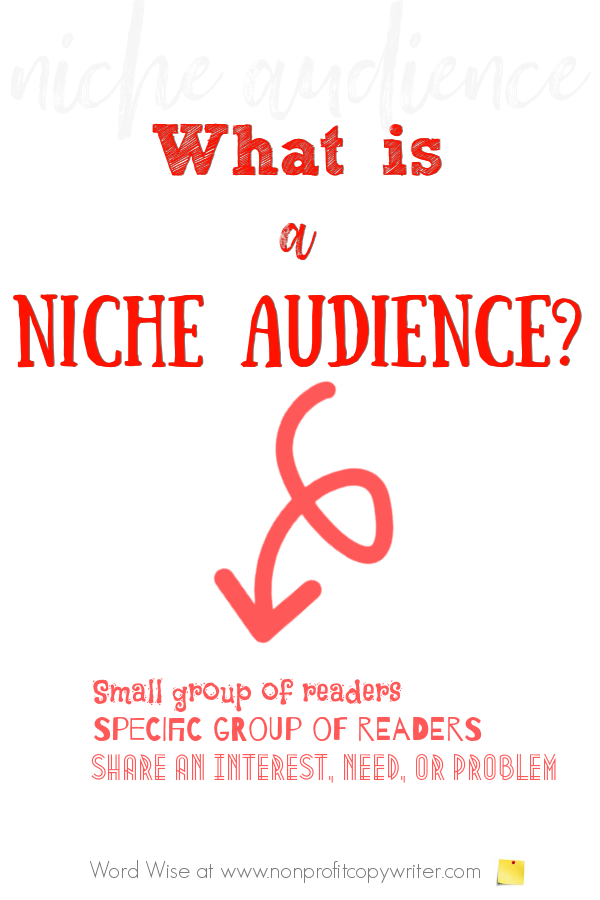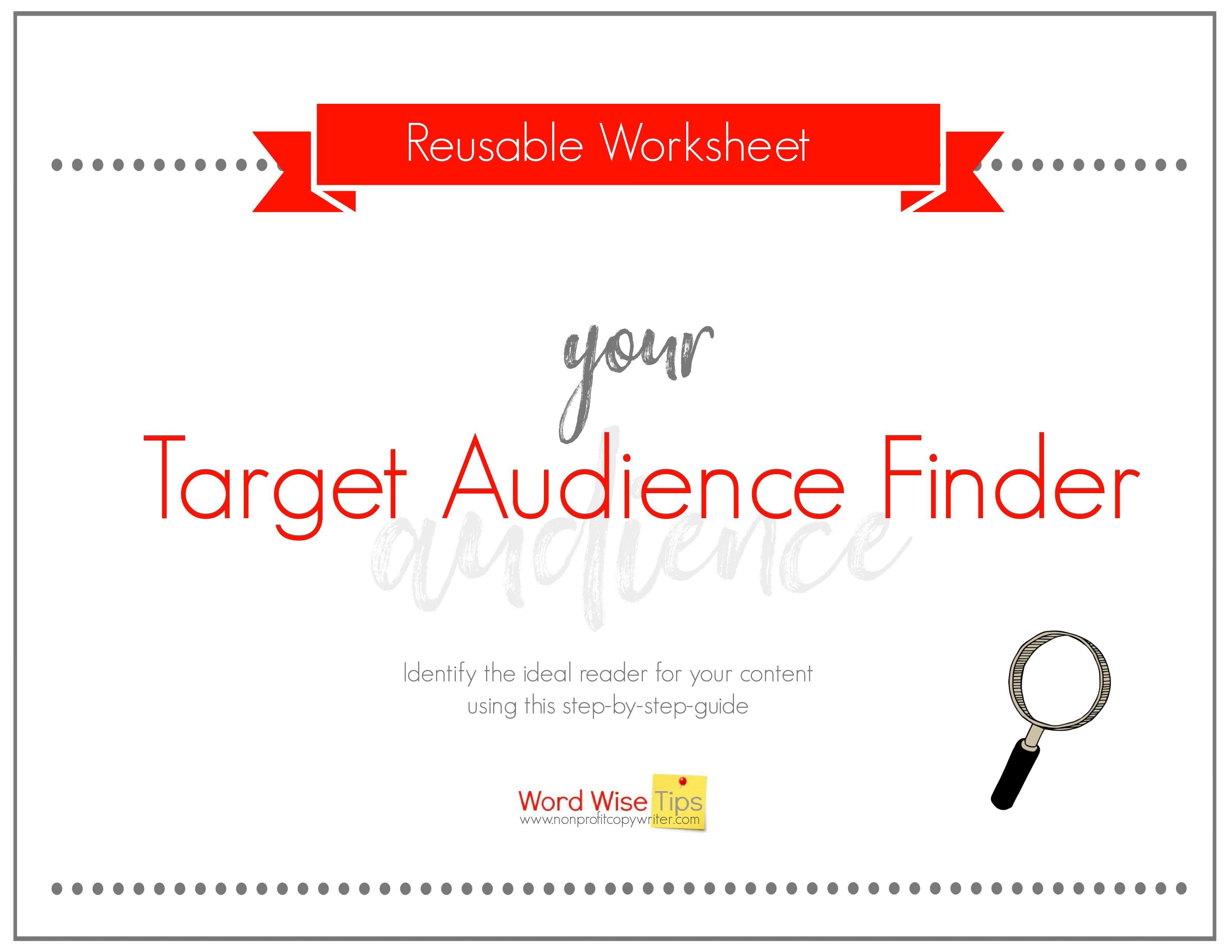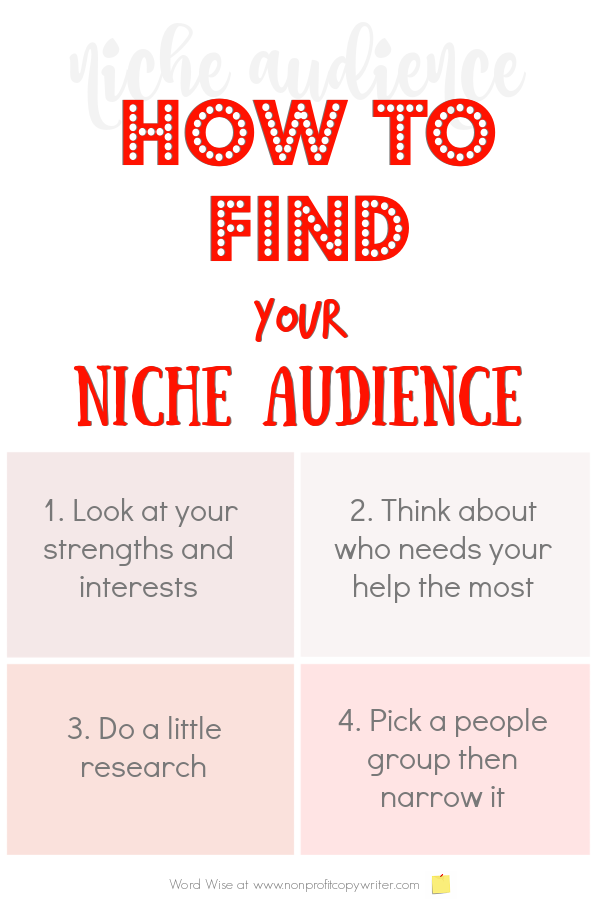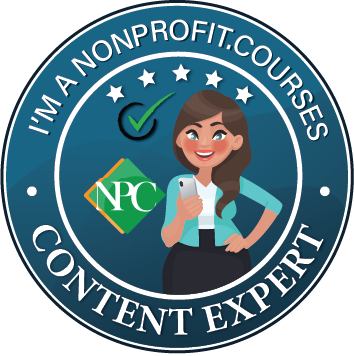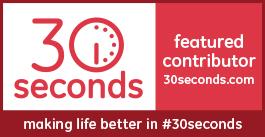Save Time: Get 5 Simple Writing Tips
you can put to use in 10 minutes
Don’t Be A Writer For Everyone. Choose Your Niche Audience.
Award-winning writer Kathy Widenhouse has helped hundreds of nonprofits and writers produce successful content , with 750K+ views for her writing tutorials. She is the author of 9 books. See more of Kathy’s content here.
Updated 10.28.25
When I first started writing seriously, I cast my net wide and pumped out content for a telecommunications firm … a carpentry products business … a community athletic organization.
But the projects that gave me the most satisfaction were with nonprofits. Specifically, faith-based nonprofits. And even more specifically, I got the biggest kick out of writing for newcomers like me who wanted to write for faith-based organizations but didn’t know where to start.
Unknowingly, I’d stumbled onto my niche audience.
Yet I was afraid to narrow down my blog content and my client prospecting because I thought my niche audience was too tiny. How many would-be content creators wanted to specialize in writing for faith-based nonprofits? And why would they turn to me for advice?
So for a few years, I “settled.” I focused on writing general content.
It was a classic blunder. To be fair, I gained some followers along the way. The problem was that my niche readers got lost in the shuffle.
You needn’t repeat my mistake.
What is a niche audience?
Think of your niche audience as your “people.” Instead of trying to write for everyone on the internet (which is impossible), zoom in on a smaller, more specific group of readers who share a common interest, need, or problem. For instance …
- General audience: “People who want to get healthy.”
- Niche audience: “Busy moms who want quick, five-ingredient healthy dinners.”
See the difference? The first group is huge and vague. The second is targeted — you know exactly what they care about, what frustrates them, and how your writing can help. And you can write content that’s just for them.
What is the opposite of a niche audience?
The opposite of a niche audience is a mass audience (AKA a general audience). Mass audience content aims to appeal to as many people as possible. Think Super Bowl broadcast, the nightly network news, or blockbuster movies from Marvel or Disney, designed to reach everyone — kids, parents, sports fans, casual viewers, people who don’t normally watch TV, but tune in for the big event.
- Mass audience = broad reach, wide appeal, less personal connection.
- Niche audience = smaller reach, highly targeted, and deeper engagement.
It’s akin to the distinction between a fast-food chain that serves millions of people with a standard menu and a small neighborhood café that caters to vegans who appreciate locally roasted coffee. Both have their place — it just depends on your goals.
If you’re a freelance writer or solopreneur, you have less bandwidth to reach a mass audience. But a niche audience? You can easily find out where they live online and what they need.
What are some examples of a niche audience?
- Pet businesses targeting dog owners with senior dogs.
- Nonprofits raising money for clean water projects in rural communities.
- Tech startups serving financial advisors who want AI tools.
Each is clear, specific, and easy to picture.
What’s the difference between a niche audience and a content niche?
A niche audience is the specific group of people you’re trying to reach — the ones you want reading, watching, or buying. Think of them as the who. For example, if you’re a garden blogger, your niche audience might be home gardeners who live in apartments and only have balcony space.
A content niche, on the other hand, is the what. It’s the particular topic or focus area you create content about. Sticking with gardening, your content niche might be “growing tomatoes in small spaces” or “organic balcony gardening.” That’s the subject lane you stay in so your content doesn’t feel scattered.
Put together, they’re a powerful way to get your message out. You’re not just talking about any gardening topic, and you’re not trying to reach everyone who breathes — you’re creating the right content for the right people.
What’s the difference between a niche audience and a target audience?
People may use the terms interchangeably, but there’s a difference.
Target audience = the whole pie. It’s the intended group of people you want your media, product, or message to reach. It can be broad or narrow. For example, a target audience could be “women ages 25–45 who enjoy fitness.”
Niche audience = one piece of the pie. It’s a smaller, more specialized subgroup within that target audience. It drills down to a very specific interest, lifestyle, or need. Looking at our example, a niche audience might be “women ages 25–45 who enjoy outdoor trail running.”
Every niche audience is a kind of target audience, but not every target audience is a niche.
Use this step-by-step worksheet to find your target audience.
What does “niche audience” mean in media?
It means the same as the term does in print, applied to different formats. For instance, you target a niche audience when you produce …
- A podcast that only covers indie video games
- A YouTube channel that dives into urban balcony gardening
In these instances, your listeners or viewers aren’t just “people who like games” or “people who like plants” — they’re people who geek out over specific types of games or specific gardening setups.
What are the advantages and disadvantages of writing to a niche audience?
Advantages of writing to a niche audience
- Clarity. You know exactly who you’re talking to, which makes writing way easier.
- Authority. The more you write, the more you continue to learn about your niche. You become one of the “go-to” writers in your space. People trust specialists more than generalists. How many writers in the home repair industry focus on the first tools that are must-haves for a new female homeowner? That’s right, maybe only you and one or two more.
- Higher rates/plenty of work. Content writers with niche expertise often earn more because clients value specialized knowledge.
- Loyalty. A niche audience sticks with you because you “get” them better than a general writer ever could.
- Reach. You pull in outliers. This surprised me when I started niching down. I’d find a reader engaged in a piece of specialized content I posted on LinkedIn about grant writing — but then subscribed to all of my content.
Disadvantages of writing to a niche audience
- Smaller pool. By narrowing down, you automatically exclude others. But to be fair, the internet gives you a worldwide audience from which to pull your niche-rs. And as I said, if you write quality content, others come along for the ride … and just may join your specialty niche wagon train.
- Risk of burnout. If your niche doesn’t genuinely interest you, you may get bored fast. This one is easy to solve. Don’t choose a niche that your heart’s not in.
- Market changes. To be honest, I had to mention this disadvantage because it exists, but I’ve found it to be minor. If your niche becomes saturated, loses demand, or decreases in popularity, you might have to pivot. But when you write quality evergreen content — information that stays relevant long after you publish it — readers continue to find it useful.
- Intimidation. When you’re starting, it can feel limiting and overwhelming to “choose one lane” instead of writing for everyone. Satisfy yourself by writing in a handful of niches. You’ll discover which ones appeal to you and which ones have “holes” that you can fill.
How do you identify your niche audience?
- Look at your strengths and interests. What topics do you love writing about? What industries do you know inside-out? What questions do you get asked often? I’d been writing for my church for more than a decade when I decided to dip my toe into writing for faith-based organizations.
- Think about who needs your help most. Consider the people who would benefit most from your words. A good niche solves a specific problem. When I discovered that small to mid-size nonprofits struggled to create content because their leaders wear so many hats, I was ready to start niching down.
- Do a little research. Peek at forums, social media groups, or even Amazon reviews. You’ll see what questions people are asking in your potential niche. Voila! You’ll uncover an opening that needs to be filled with your content.
- Narrow it down. Instead of “business owners,” maybe it’s “solopreneurs running Etsy shops.” Instead of “parents,” maybe it’s “parents of kids with food allergies.” Don’t be afraid — like I was — to get specific. You have become fluent in a certain topic or learned how to solve a particular problem. Other people need to know what you have learned.
Don’t be a writer for everyone
Here’s the secret: you don’t have to marry your niche and stay glued to it forever. Many writers — like me — start broad, experiment, and then naturally discover who they enjoy writing for most. Once you find your niche audience, it’s like flipping a switch — your messaging clicks, clients “get it,” and your writing feels more focused.
The magic happens when you stop trying to be “a writer for everyone” and start being “the writer for them” — your niche audience.
More about Niche Writing
Audience: Know Your Reader Before You Write
Your Target Audience: Here's How to ID Them …
Who Is the Target Audience for Your Content?
Want More Traffic? Cross-Posting Is Easy ...
What Is a Freelance Writing Niche? FAQs ...
Make Money As a Writer When You Specialize and Sub-Specialize ...
Branding Basics for Writers (Especially Non-Marketers) ...
The Most Important Factor in Choosing A Content Writing Niche ...
What Is a Niche Site? Consider Building One For Fun and Profit ...
27 Content Ideas to Build Your Audience and Extend Your Reach
More tips for freelance writers on our Pinterest board ...
Return from Choose Your Niche Audience to Nonprofit Copywriter home
As an Amazon Associate I earn from qualifying purchases.
Share This Page

Named to 2022 Writer's Digest list
BEST GENRE/NICHE WRITING WEBSITE

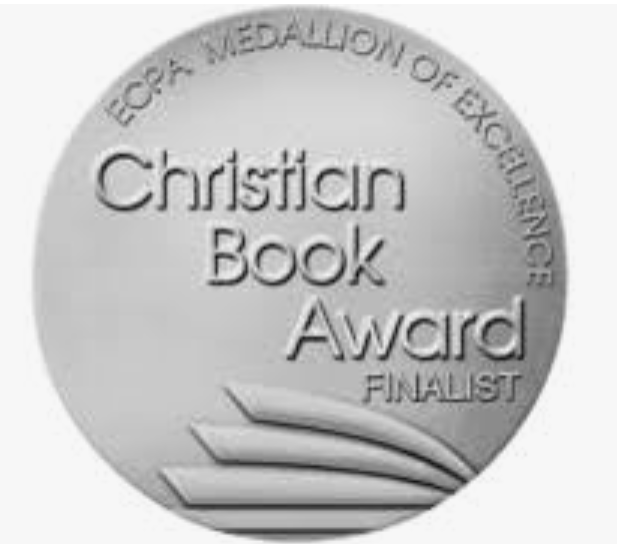
Stop Wasting Time!
Grab your exclusive FREE guide, "5 Simple Writing Tips You Can Put to Use in 10 Minutes or Less"
